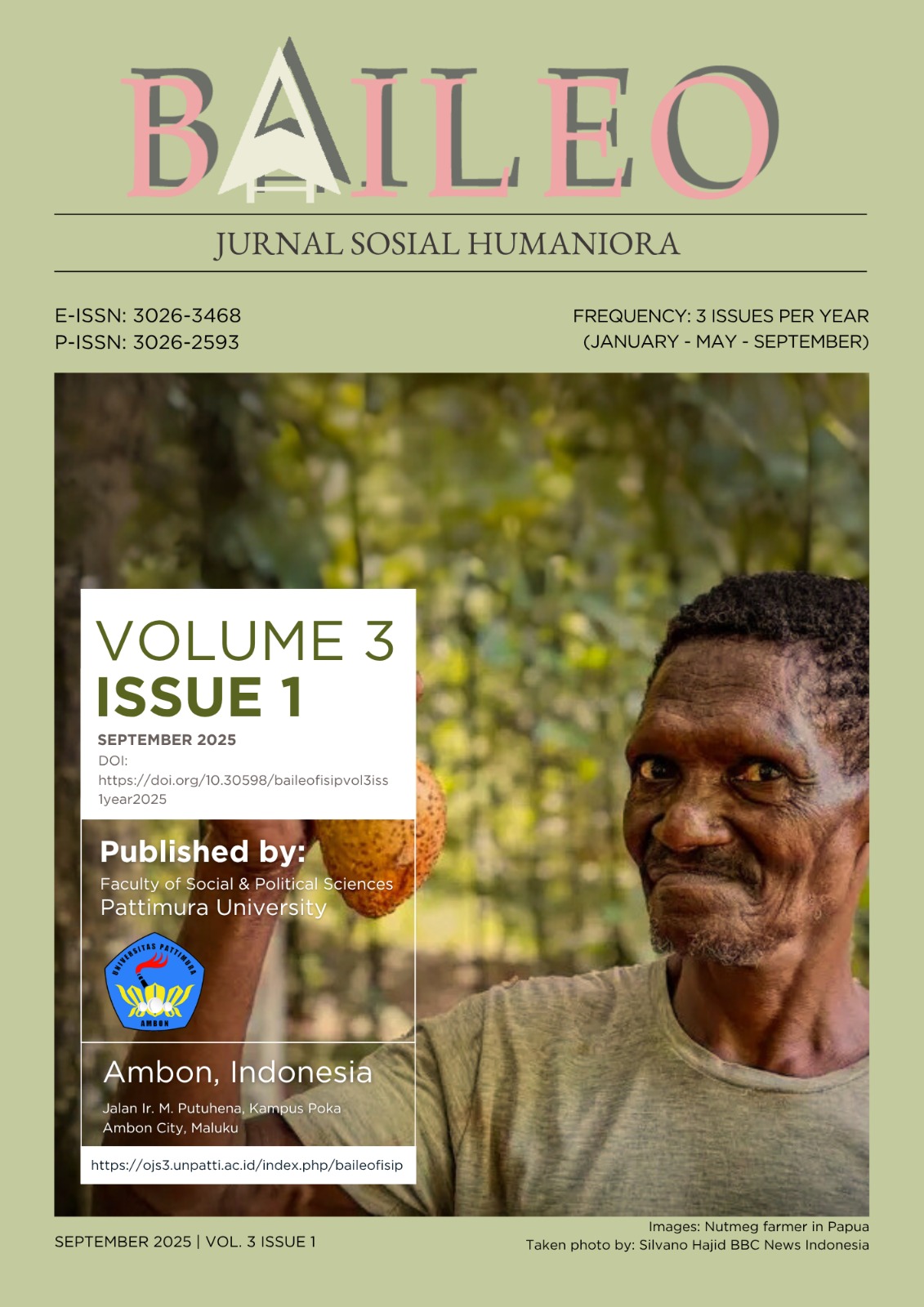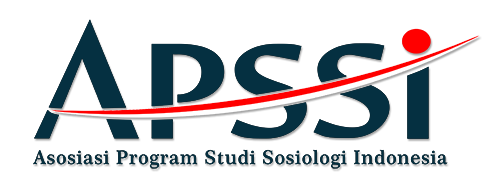Between Luxury and Necessity: a Socioeconomic Evaluation of Animal Protein Demand Elasticity in North Sumatra
Abstract
This study evaluates the demand elasticity of animal protein in North Sumatra Province, focusing on the relationship between price, income, and consumption patterns across four major commodities: beef, chicken, fish, and eggs. North Sumatra was purposively selected due to its status as the most populous province in Sumatra and its significant contribution to regional protein demand. The study utilizes secondary time-series data from Q1 2014 to Q4 2024, obtained from official government sources. The Linear Approximation Almost Ideal Demand System (LA/AIDS) model is applied to estimate price elasticity, income elasticity, and substitution-complementarity relationships among commodities. The results indicate that beef and chicken are price-elastic, while fish and eggs are price-inelastic. The strongest substitution effect is observed between beef and chicken. In terms of income elasticity, beef and chicken are considered luxury goods, whereas fish and eggs are classified as normal goods. These findings highlight segmented consumption patterns driven by purchasing power disparities. The study’s novelty lies in its long-term elasticity mapping of animal protein demand in a densely populated, non-Java province. Policy recommendations include price stabilization for beef and chicken, and targeted food assistance or subsidies for low-to-middle-income households to improve equitable access to quality protein. The findings enrich social science and humanities literature, particularly in food economics, public policy, and region-based food security studies.
Downloads
References
Ali, R. M., Toiba, H., & Nugroho, T. W. (2024). Analysis of the Function of Animal Protein Food Demand in Household in The DI Yogyakarta. HABITAT, 35(2), 184–192. https://doi.org/10.21776/ub.habitat.2024.035.2.17
Anindita, R., Khoiriyah, N., & Sa’diyah, A. A. (2022). Food consumption pattern Far Away From Home as a source of household food protein in Indonesia. IOP Conference Series: Earth and Environmental Science, 1107(1), 012118. https://doi.org/10.1088/1755-1315/1107/1/012118
Anyanwu, O. A., Naumova, E. N., Chomitz, V. R., Zhang, F.-F., Chui, K., Kartasurya, M. I., & Folta, S. C. (2022). The Socio-Ecological Context of the Nutrition Transition in Indonesia: A Qualitative Investigation of Perspectives from Multi-Disciplinary Stakeholders. Nutrients, 15(1), 25. https://doi.org/10.3390/nu15010025
Baladina, N., Toiba, H., Hanani, N., Suhartini, S., & Widarjono, A. (2024). Do income levels affect the food consumption pattern of households? Evidence from Indonesia. Asian Economic and Financial Review, 14(9), 695–711. https://doi.org/10.55493/5002.v14i9.5158
Basílio, M. P., Pereira, V., Costa, H. G., Santos, M., & Ghosh, A. (2022). A Systematic Review of the Applications of Multi-Criteria Decision Aid Methods (1977–2022). Electronics, 11(11), 1720. https://doi.org/10.3390/electronics11111720
Cattaneo, A., Sadiddin, A., Vaz, S., Conti, V., Holleman, C., Sánchez, M. V, & Torero, M. (2023). Viewpoint: Ensuring affordability of diets in the face of shocks. Food Policy, 117, 102470. https://doi.org/https://doi.org/10.1016/j.foodpol.2023.102470
Darus, M. B., & Lindawati. (2023). Analysis of problems in increasing beef production with the Interpretative Structural Modeling (ISM) approach in North Sumatera. IOP Conference Series: Earth and Environmental Science, 1241(1), 012040. https://doi.org/10.1088/1755-1315/1241/1/012040
de Pee, S., Hardinsyah, R., Jalal, F., Kim, B. F., Semba, R. D., Deptford, A., Fanzo, J. C., Ramsing, R., Nachman, K. E., McKenzie, S., & Bloem, M. W. (2021). Balancing a sustained pursuit of nutrition, health, affordability and climate goals: exploring the case of Indonesia. The American Journal of Clinical Nutrition, 114(5), 1686–1697. https://doi.org/https://doi.org/10.1093/ajcn/nqab258
Deaton, A., & Muellbauer, J. (1980). An almost ideal demand system. The American Economic Review, 70(3), 312–326.
Eng, C. W., Lim, S. C., Ngongo, C., Sham, Z. H., Kataria, I., Chandran, A., & Mustapha, F. I. (2022). Dietary practices, food purchasing, and perceptions about healthy food availability and affordability: a cross-sectional study of low-income Malaysian adults. BMC Public Health, 22(1), 192. https://doi.org/10.1186/s12889-022-12598-y
Hochedez, C. (2022). Food justice: processes, practices and perspectives. Review of Agricultural, Food and Environmental Studies, 103(4), 305–320. https://doi.org/10.1007/s41130-023-00188-4
Ignanga, C., Chen, Y., Zhao, Y., Liu, H., & Yu, W. (2025). Cross-Sectional Analysis of Household Food Demand in Estuaire Gabon: A Near-Ideal Quadratic Demand System Approach. Agriculture, 15(3), 268. https://doi.org/10.3390/agriculture15030268
Jin, Y., & Gil, J. M. (2025). Are consumers more sensitive to price changes during food scares? A regime-switching dynamic almost ideal demand system approach. Agricultural and Food Economics, 13(1), 44–54. https://doi.org/10.1186/s40100-025-00391-5
Khoiriyah, N., Apriliawan, H., & Forgenie, D. (2023). Analyzing Household Demand for Animal Food As a Source of Protein: the Case of Rural Gorontalo Province, Indonesia. Agricultural Socio-Economics Journal, 23(2), 239–248. https://doi.org/10.21776/ub.agrise.2023.023.2.13
Khoiriyah, N., Forgenie, D., & Iriany, A. (2023). Estimating Household Price and Income Elasticities for Animal-Sourced Food: The Case of Bengkulu Province, Indonesia. Agris On-Line Papers in Economics and Informatics, 15(3), 73–85. https://doi.org/10.7160/aol.2023.150307
Khusun, H., Februhartanty, J., Anggraini, R., Mognard, E., Alem, Y., Noor, M. I., Karim, N., Laporte, C., Poulain, J.-P., Monsivais, P., & Drewnowski, A. (2022). Animal and Plant Protein Food Sources in Indonesia Differ Across Socio-Demographic Groups: Socio-Cultural Research in Protein Transition in Indonesia and Malaysia. Frontiers in Nutrition, 9(1), 1–8. https://doi.org/10.3389/fnut.2022.762459
Khusun, H., Monsivais, P., Anggraini, R., Februhartanty, J., Mognard, E., Alem, Y., Noor, M. I., Karim, N., Laporte, C., Poulain, J.-P., & Drewnowski, A. (2022). Diversity of protein food sources, protein adequacy and amino acid profiles in Indonesia diets: Socio-Cultural Research in Protein Transition (SCRiPT). Journal of Nutritional Science, 11, e84. https://doi.org/DOI: 10.1017/jns.2022.82
Manannalage, K. M. L. R., Chai, A., & Ratnasiri, S. (2023). Eating to live or living to eat? Exploring the link between calorie satiation, Bennett’s law, and the evolution of food preferences. Journal of Evolutionary Economics, 33(4), 1197–1236. https://doi.org/10.1007/s00191-023-00828-4
Mariyono, J. (2024). Sustainable intensification practices of fish-rice co-culture in Java, Indonesia: technical, socio-economic and environmental features. Journal of Agribusiness in Developing and Emerging Economies, 14(5), 1015–1032. https://doi.org/10.1108/JADEE-09-2022-0208
Masruroh, N., Raziqi, A., & Hariyanto, A. F. D. (2021). Halal Lifestyle as A New Lifestyle in Modern Era: Demand Function Theory of Marshall and Ibn Taimiyah. Economica: Jurnal Ekonomi Islam, 12(2), 197–220. https://doi.org/10.21580/economica.2021.12.2.6838
Meenakshi, J. V, & Quisumbing, A. (2025). Diet quality and micronutrient intakes in nutritional value chains: A synthesis and suggestions for further research. Food Policy, 130, 102789. https://doi.org/https://doi.org/10.1016/j.foodpol.2024.102789
Mehraban, N., & Ickowitz, A. (2021). Dietary diversity of rural Indonesian households declines over time with agricultural production diversity even as incomes rise. Global Food Security, 28, 100502. https://doi.org/https://doi.org/10.1016/j.gfs.2021.100502
Najib, M., Sumarwan, U., Septiani, S., Waibel, H., Suhartanto, D., & Fahma, F. (2022). Individual and Socio-Cultural Factors as Driving Forces of the Purchase Intention for Organic Food by Middle Class Consumers in Indonesia. Journal of International Food & Agribusiness Marketing, 34(3), 320–341. https://doi.org/10.1080/08974438.2021.1900015
Neilson, J. (2022). Intra-cultural consumption of rural landscapes: An emergent politics of redistribution in Indonesia. Journal of Rural Studies, 96(1), 89–100. https://doi.org/10.1016/j.jrurstud.2022.10.018
Nofal, B., Suhartini, S., & Fahriyah, F. (2024). Analysis of Animal-Sourced Protein Food Demand Function in Household in East Java and East Nusa Tenggara. HABITAT, 35(2), 161–171. https://doi.org/10.21776/ub.habitat.2024.035.2.15
Nurhasan, M., Maulana, A. M., Ariesta, D. L., Usfar, A. A., Napitupulu, L., Rouw, A., Hurulean, F., Hapsari, A., Heatubun, C. D., & Ickowitz, A. (2022). Toward a Sustainable Food System in West Papua, Indonesia: Exploring the Links Between Dietary Transition, Food Security, and Forests. Frontiers in Sustainable Food Systems, 5(1), 1–8. https://doi.org/10.3389/fsufs.2021.789186
Permatasari, A. D., Ikhsan, S., & Yanti, N. D. (2025). Analysis of Household Food Demand in South Kalimantan Province Application Quadratic Model Almost Ideal Demand System (QUAIDS). European Journal of Agriculture and Food Sciences, 7(4), 8–14. https://doi.org/10.24018/ejfood.2025.7.4.927
Rozi, F., Santoso, A. B., Mahendri, I. G. A. P., Hutapea, R. T. P., Wamaer, D., Siagian, V., Elisabeth, D. A. A., Sugiono, S., Handoko, H., Subagio, H., & Syam, A. (2023). Indonesian market demand patterns for food commodity sources of carbohydrates in facing the global food crisis. Heliyon, 9(6), e16809. https://doi.org/10.1016/j.heliyon.2023.e16809
Santarita, J. (2022). Beyond Eating: Theorizing the Trinitas of Food in Southeast Asia. Scientia - The International Journal on the Liberal Arts, 11(2). https://doi.org/10.57106/scientia.v11i2.1
Suresti, A., Wati, R., & Sari, T. G. (2024). Marketing analysis and price transmission elasticity of beef cattle at Batang Kapas District, Pesisir Selatan Regency. IOP Conference Series: Earth and Environmental Science, 1341(1), 012107. https://doi.org/10.1088/1755-1315/1341/1/012107
Vahabi, M. (2025). The Relevance of the Marshallian Concept of Normality in Interior and Inertial Dynamics as Revisited by Shackle and Kornai. The Legacy of Janos Kornai (pp. 183–220). Springer Nature Switzerland. https://doi.org/10.1007/978-3-031-83239-0_12
Wibowo, R. P., Pebriyani, D., Indrawati, T., & Khaliqi, M. (2025). How Beef, Chicken, and Egg Demand Elasticities Vary with Income in Indonesia. Jurnal AGRISEP: Kajian Masalah Sosial Ekonomi Pertanian Dan Agribisnis, 24(2), 361–384. https://doi.org/10.31186/jagrisep.24.01.361-384
Wongmonta, S. (2022). An assessment of household food consumption patterns in Thailand. Journal of the Asia Pacific Economy, 27(2), 289–309. https://doi.org/10.1080/13547860.2020.1811191
Zopounidis, C., & Doumpos, M. (2022). Multi‐criteria decision aid in financial decision making: methodologies and literature review. Journal of Multi-Criteria Decision Analysis, 11(4–5), 167–186. https://doi.org/10.1002/mcda.333
Copyright (c) 2025 Selsa Juita Nababan, Sri Fajar Ayu

This work is licensed under a Creative Commons Attribution 4.0 International License.




